The other night someone asked me to dance and didn’t mention until we were on the floor that she only knew how to follow, so I would be leading.
I’d rather follow than lead, but I’d rather lead than not be able to dance with someone. But I’m in a bit of a slump and haven’t done any leading in months. She was kind and patient, so we powered through, and all was well even though my mental pattern library is full of cobwebs.
I can remember maybe five patterns while leading, and that’s at the beginning of the song. Then I lose the beat for a second, or the follower looks at me quizzically, and I panic and the 100+ workshops I’ve attended in the past two years dissolve from my brain, leaving me grasping at straws.
To build my confidence, I drew out all of the patterns I’m reasonably capable of leading, akin to Myles and Tessa’s pattern collection exercise. It’s far from comprehensive, it just covers most of what I’m comfortable with and makes connections between different movements to solidfy them in my brain.
1. The pass
This is the best place to start. It’s easy: I initiate movement, get out of the way, and my partner walks on by. Or struts, or sashays, whatever sparks joy for them. I can guide them down either side of me, giving me two patterns for the memory space of one. If they pass on my right, the shape of our skeletons makes it feel natural to lift our clasped hands so they turn underneath – fancy!
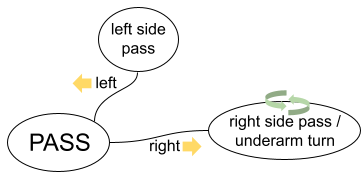
2. The push
Same structure as a pass, introducing the feeling of compression, a counterpoint to the pass’s feeling of stretch. Arguably easier than a pass, but as a leader I get self-conscious repeatedly leading basic pushes. As a follower, I like the feeling of compression more than stretching, and I’m happy to dance a full song of them with a leader who feels good.

3. The whip
The third and final basic pattern. Now I know everything there is to know, right?
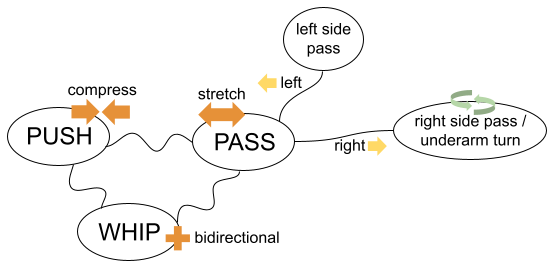
4. More pushes: turn the follower
Learning a whip was hard. Let’s go back to pushes and just vary them with hand height. Hand(s) low is a basic sugar push, which remains my favorite. Raising a hand high adds a turn for the follower, in either direction.
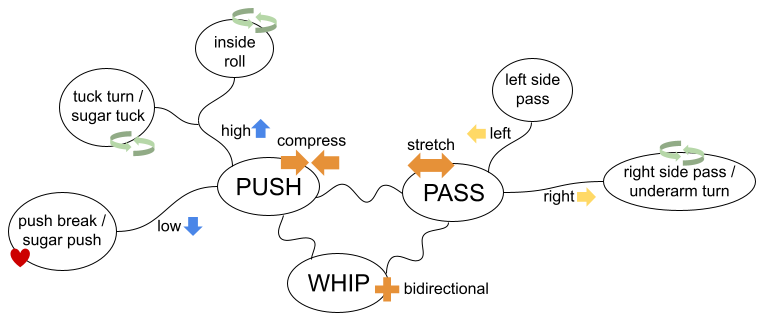
5. More passes
Passes inherently have a left/right option and also have the high/low options. Drawing out these four possibilities starts to make it look like I know many things. As a bonus, applying the concept of a tuck yields a passing tuck.
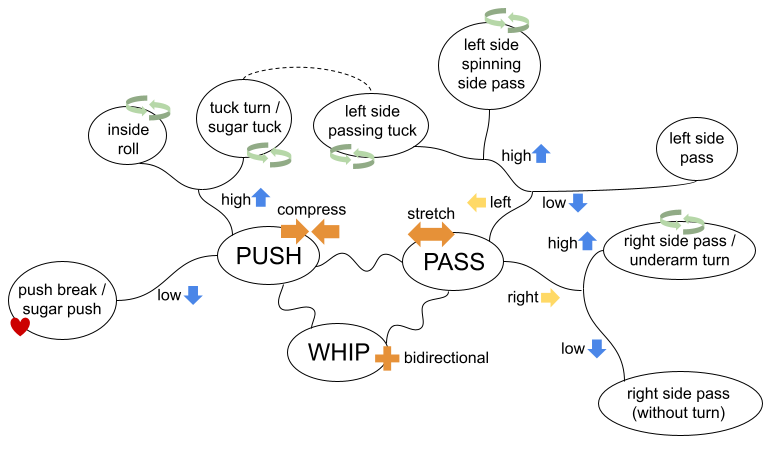
6. Whip endings
As a new lead, the easiest way to vary a whip is to alter the exit a little bit. If everything goes well for the first few beats, my job is basically done, it’s much effort end it with a turn – relatively high Fanciness to Brainpower Required (FtBR) ratio.
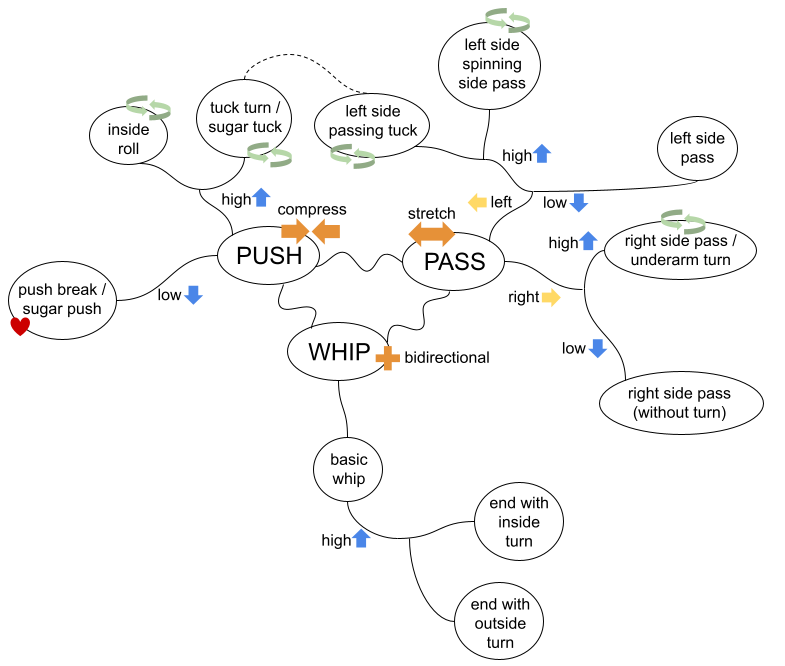
7. Even more passes
The simplicity of a pass allows for a lot of expression. You can let the follower do their own thing, or you can guide particular variations. The former is obviously much easier on the lead, but I’m making progress on the latter. As a follower, one of my favorite things is to be caught and redirected in the middle of a pass – little surprises are lovely.
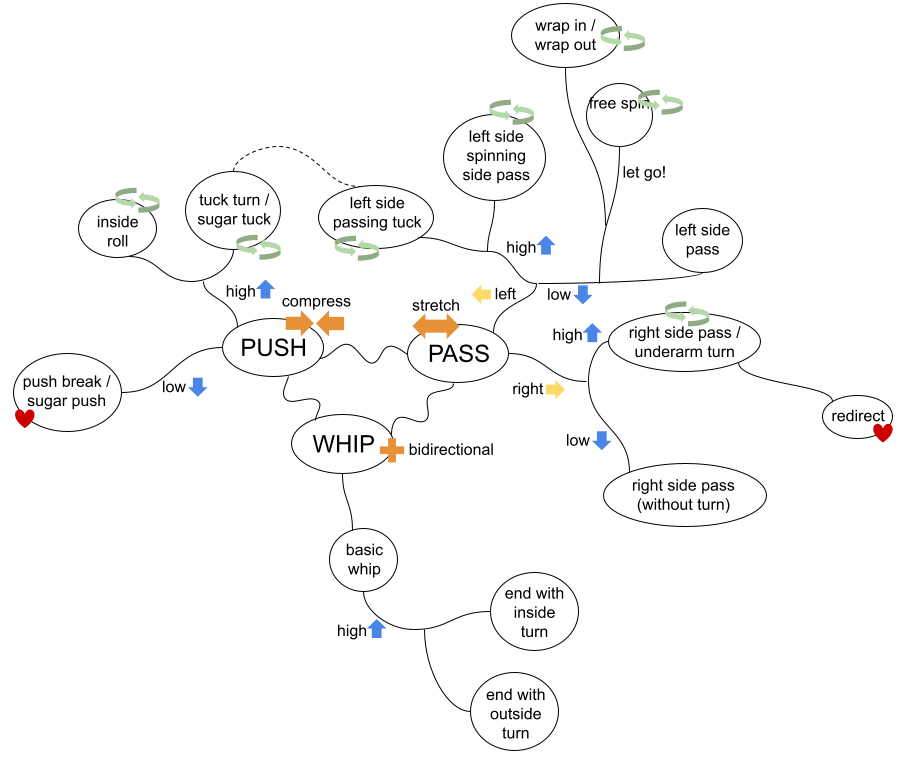
8. More whips
Of the million whip variants, I have a decent handle on exactly two: the reverse whip, which is a tiny variation on just the first two beats, and the basket whip, courtesy of some workshop that drilled it for an hour.
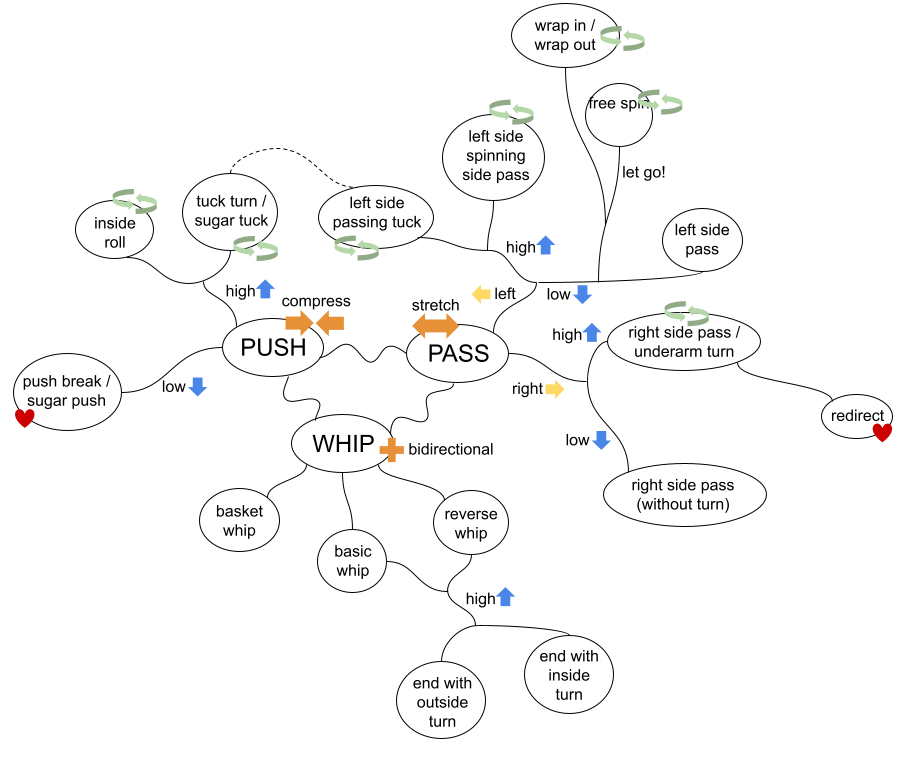
9. Handholds
Something that doesn’t quite fit into the schematic: variation in how you’re connecting to each other. Holding one hand or both? Which one(s)? Some movements work better from a particular handhold, but many work with multiple options.
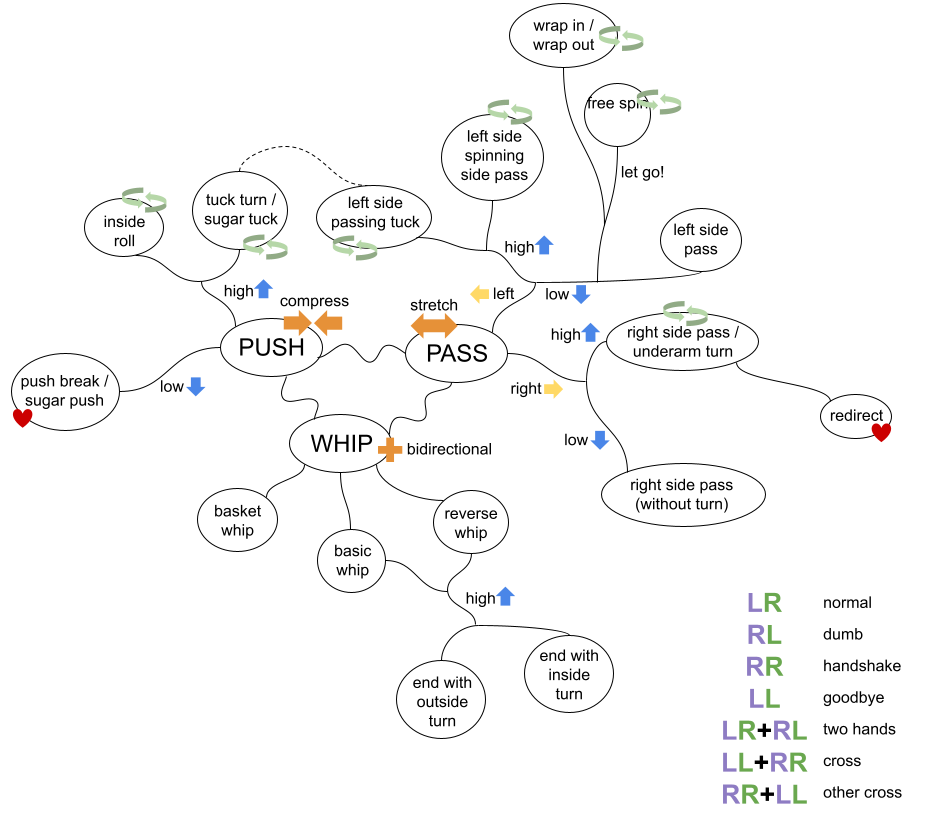
10. Flourishes
Like whip variations, there are a million flourishes. Gestures, styles of walking, any kind of motion that connects to a bit of music. This is also a good place to remind myself that leading isn’t just about leading but also about, well, dancing. Natural dancer that I am, sometimes this means consciously reminding myself of body parts: “I have hips. They can move. I have ribs. They can move.”1 I have my own body and can move it to the music independently of my partner. In theory, at least.
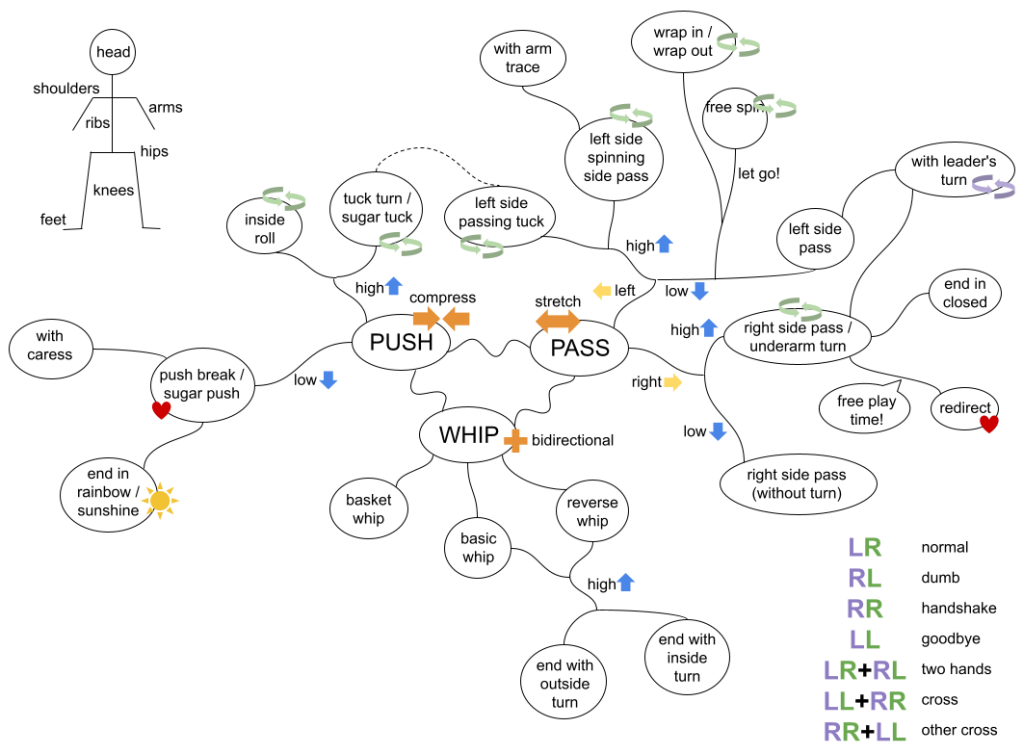
- Who thinks about the motion of their ribs in daily life? ↩︎
You must be logged in to post a comment.